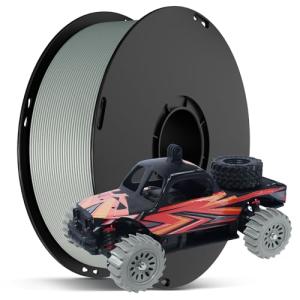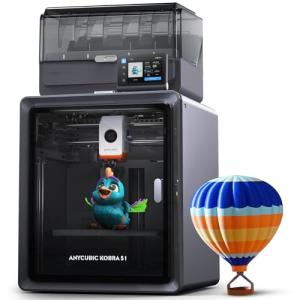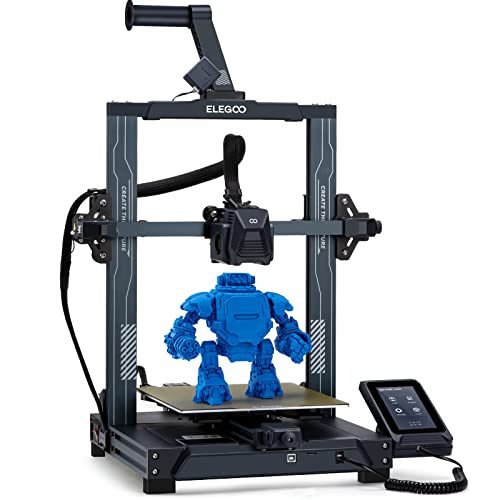When it comes to 3D printer filament, different options can yield different results. It’s essential to choose the right material for your project. Let’s break down some popular types of 3D printer filament so you can find the best fit.
PLA (Polylactic Acid) is one of the most common filaments out there. It’s made from renewable resources like cornstarch, which makes it eco-friendly. PLA is super easy to work with, great for beginners, and produces vibrant colors. It doesn’t warp much, so it’s perfect for detailed designs. If you want something simple for home projects or prototypes, PLA is your go-to.
ABS (Acrylonitrile Butadiene Styrene) is another favorite, especially for strength and durability. If you’re printing items that need to withstand more stress, ABS is up to the task. It’s better for functional parts, but keep in mind it can warp if you’re not careful with temperature settings. A heated bed helps a lot with that!
TPU (Thermoplastic Polyurethane) brings a different vibe. This flexible filament is perfect for items that need to bend or stretch like phone cases and gaskets. It can be a bit trickier to work with since it’s more elastic, but if you need something flexible, it’s worth the effort.
Lastly, consider ASA (Acrylonitrile Styrene Acrylate), which is similar to ABS but has UV resistance. If your 3D prints will be outside, ASA is a solid choice. It’s tough and will keep looking good in the sun without fading. Just think about what you plan to make, and you’ll find the right 3D printer filament for your needs.
How to Select the Best Filament
Selecting the best 3D Printer Filament can feel overwhelming, but it doesn't have to be! Start by thinking about what you want to create. Are you making a prototype or a decorative piece? This will guide your material choice.
Next up is compatibility. Check if your 3D printer can handle different filament types. PLA is a great starting point for beginners because it’s user-friendly and works with most printers. If you’re looking for something tougher, ABS filament is more durable but can be tricky to print with due to warping.
Don’t forget about color and finish! Many filaments come in a range of colors, finishes, and even metallic or glow-in-the-dark options. Pick something that speaks to your project. If you’re into creativity, experimenting with different types can lead to some cool effects!
Finally, consider your budget. Specialty filaments can get pricey, so if you’re just starting, go for standard options. You’ll learn a lot without breaking the bank. Once you get the hang of it, you can splurge on the fancy stuff later!
ANYCUBIC Grey ABS Filament 1.75mm 1KG Spool
Get vibrant prints with this reliable ABS filament that’s perfect for your next 3D project
Product information
$20.99 $19.99
Product Review Score
4.48 out of 5 stars
107 reviewsProduct links
Tips for Storing Your Filament
Storing your 3D printer filament properly can make a big difference in print quality. If you want to keep your filament in top shape, here are some handy tips to follow.
First, always keep your filament in a cool, dry place. Humidity can mess with your filament, especially with materials like PLA and nylon. Consider using sealed containers or vacuum bags to keep moisture out. You won’t believe how much of a difference it can make in preventing brittleness and clogs.
Next, think about the temperature. Ideally, store your 3D printer filament at a stable temperature away from direct sunlight. Heat can warp and degrade certain types of filament. A closet or a drawer works great—just make sure it’s not near heaters or vents.
Keeping your filament organized can save you a lot of time. Label each spool with the type and color, especially if you have a bunch stashed away. If you’re using multiple materials, keep them separated, as some filaments can absorb moisture faster than others.
Lastly, remember to check on your filament from time to time. Give it a little twist to ensure it's not getting dry or brittle. Keeping an eye on your supplies will help you spot any issues before they become a problem, so you can keep printing without any hiccups!
Anycubic Kobra S1 Combo Multicolor 3D Printer
Bring your creative ideas to life with vibrant multicolor printing and user-friendly features
Product information
$714.99
Product Review Score
4.88 out of 5 stars
172 reviewsProduct links
Common Filament Problems and Solutions
When you dive into the world of 3D printer filament, you might run into a few common issues. Don't worry though, every problem has a solution! Here’s a list of some of the most frequent filament headaches and how to tackle them.
1. Filament Not Feeding Properly
If your filament isn’t feeding through the printer smoothly, it could be due to a few reasons. Sometimes, the filament can get tangled or kinked. To fix this, make sure your spool is mounted correctly and free to spin. If it's still a no-go, check the extruder for clogs. A quick clean can get things flowing again!
2. Layer Adhesion Issues
Are your layers not sticking? That can lead to weak prints or even failures. A common fix is to adjust your printing temperature. Different 3D printer filaments work best at specific temperatures, so make sure you’re in the sweet spot for your material. You might also want to check your print speed; going slower can help improve layer adhesion.
3. Filament Bubbling or Warping
If you spot bubbles in your print or a warping effect on the edges, it’s likely moisture in your filament. 3D printer filament like PLA or ABS absorbs humidity, leading to these issues. Try storing your filaments in airtight containers with desiccants or drying them out with a filament dryer before use. This simple step can significantly improve print quality.
Tackling these common filament problems can save you time and frustration in your 3D printing journey. With the right knowledge and a few tweaks, you’ll be printing like a pro in no time! Enjoy experimenting with different 3D printer filaments and happy printing!





